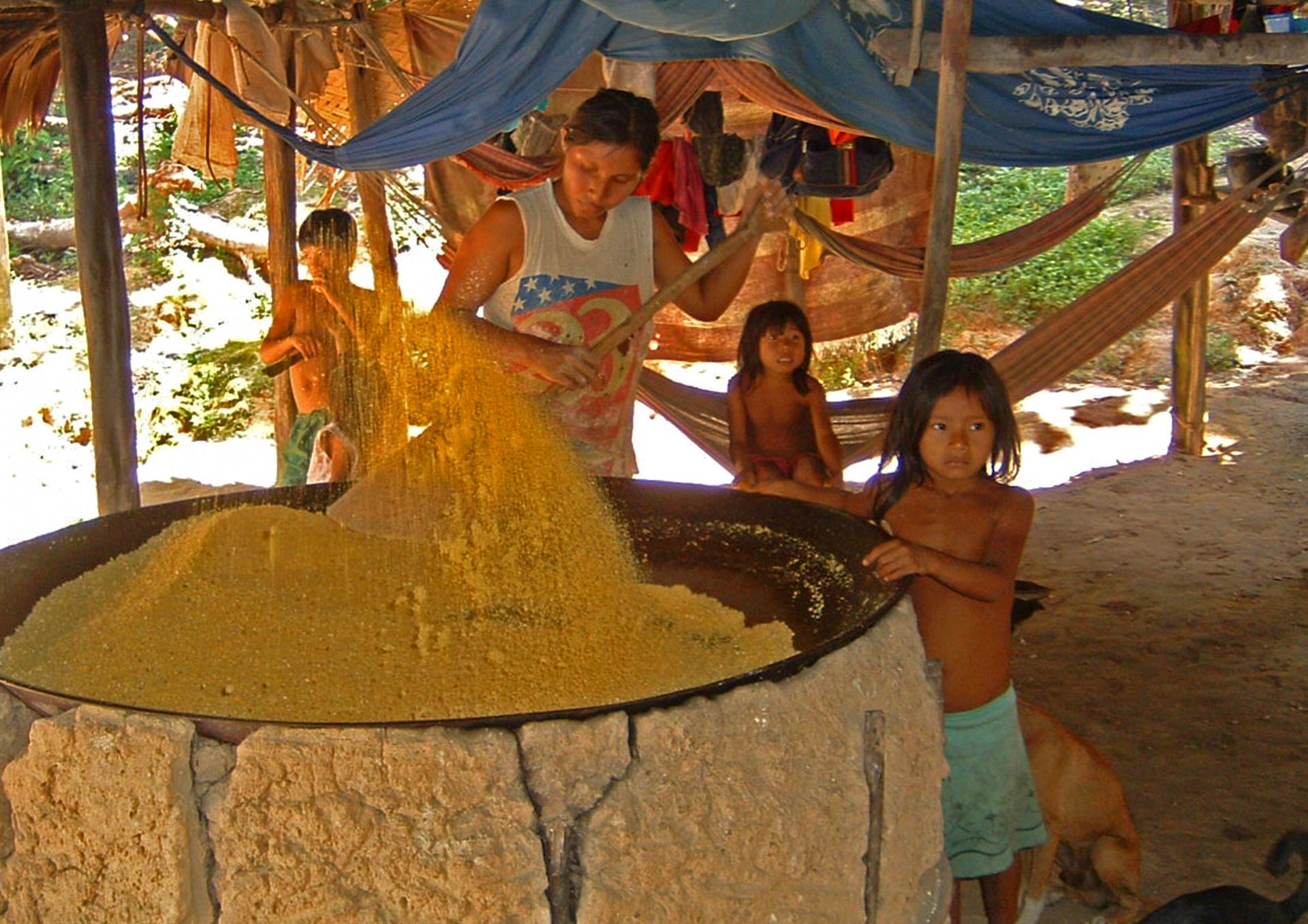Guarani and Ticuna – The Largest Indigenous Tribes in Brazil

Today, there are around 900,000 indigenous people in Brazil, belonging to one of 305 different indigenous tribes. They make up only 0.4 percent of the Brazilian population, so that you probably won’t be able to get to know them better during your Brazil vacation. 690 areas have so far been recognized as indigenous territories by the Brazilian government. Much of these areas is in the Amazon. While some indigenous tribes have several thousand members, like the Guarani and the Ticuna, others only consist of a few people, like the Akuntsu with merely four members.
At first glance, it is difficult to determine which groups of people can be explicitly designated as indigenous tribes. According to the definition of the UN Working Group on Indigenous Peoples, four main criteria can be identified:
- 1. Historical continuity: Indigenous communities feel a special attachment to a certain territory due to their ancestors, who lived in that area.
- 2. Marginality: Through a history of conquest and colonization, indigenous groups exist on the fringes of society.
- 3. Cultural distancing: Indigenous groups do not see themselves as part of the society and their dominant culture.
- 4. Self-identification: The awareness of being part of a community with its own traditions, customs, and socio-cultural forms of organization.
Guarani – The largest indigenous people in Brazil
The Guarani are the largest indigenous tribe in Brazil. Because of their relatively strong participation in social life, much is known about the Guarani. The Guarani have a total of 280,000 members. 85,000 of them live in Brazil, primarily in the southern states of Mato Grosso do Sul, Rio Grande do Sul, and Santa Catarina. Other Guarani communities can also be found in Argentina, Bolivia, and Paraguay.
The Guarani can be divided into three subgroups: Kaiowá, Ñandeva, and M’byá. The groups differ in the way in which they practice their culture and religious practice as well as in terms of organization of social interaction.
The Guarani language is assigned to the Tupi-Guarani, from which a total of 21 languages originate. The Guarani language is even recognized as Paraguay's second official language and is spoken by over 80 percent of the population there, not just by ethnic Guarani.
The Guarani are very spiritual. Every community has a house of prayer and a religious leader. The land is the source of all life. Music plays an important role in the life of the Guarani. With their chants they want to make the gods aware that they exist on earth. But the Guarani also use music as an instrument to influence natural events, such as the fall of more or less rain.
Originally, the Guarani lived from growing sweet potatoes, beans, and cassava as well as from collecting berries, hunting, and fishing. Having lost almost all of their land over the past 100 years, the Guarani are now settled in certain protected areas. Much of their former land is now pastures and soy and sugar cane plantations.
Ticuna – The largest indigenous tribe in the Amazon
The largest indigenous tribe in the Brazilian Amazon are the Ticuna, also Tikuna or Tukuna, with around 40,000 members. In addition to the Amazon, neighboring areas in Peru and Colombia, the region of the “Tres Fronteras”, are their home. The Ticuna are known for their mask art and ceremonial robes, which they make from feathers. The indigenous people have their own language, the Ticuna, which is spoken in over 100 villages and nine municipalities. The language has no similarities to any other indigenous language.
The Ticuna believe that they originally came from a river and were caught by the god Yo'i from the red waters of the Eware Current. The most important ritual is the “ritual da moça nova”, which is celebrated when the girls start menstruating for the first time. The festival always takes place under the full moon, as this represents the beauty, wisdom, and goodness of the girls. The ritual marks the transition from childhood to puberty.
The indigenous tribe is organized into two groups or classes. One bears the name of a bird and the other the name of a plant. The Ticuna are not allowed to marry a member of the other class.
While some indigenous peoples live very secluded in Brazil and avoid contact with others, there are also indigenous groups that offer guided tours through their communities. They want to inform about their culture in this way. A great way for you to learn more about indigenous life in Brazil during your next Brazil trip!
Sources: pib.socioambiental.org, www.humanrights.ch, www.survivalinternational.de

